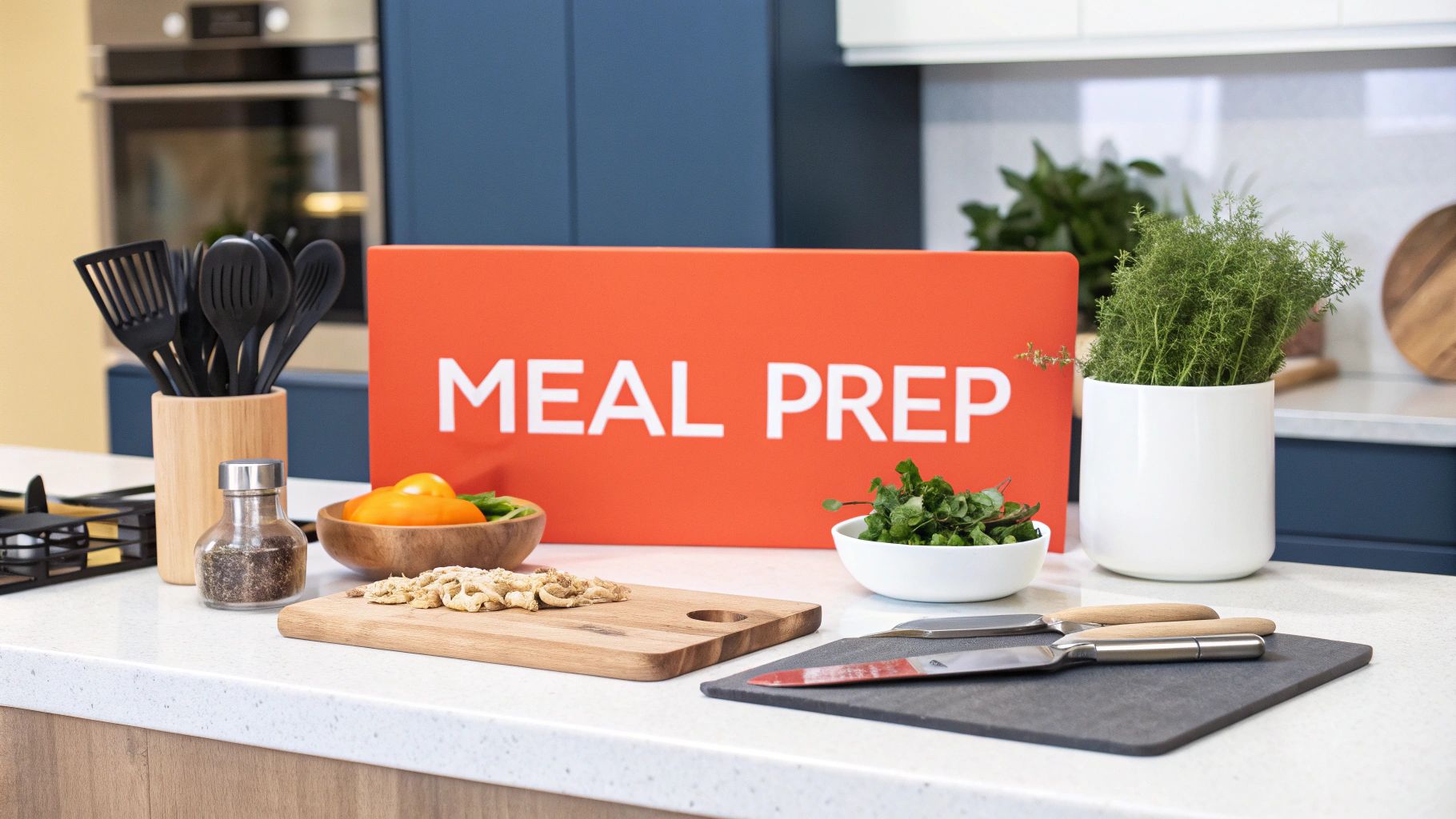The Meal Prep Revolution: Why Beginners Win Big
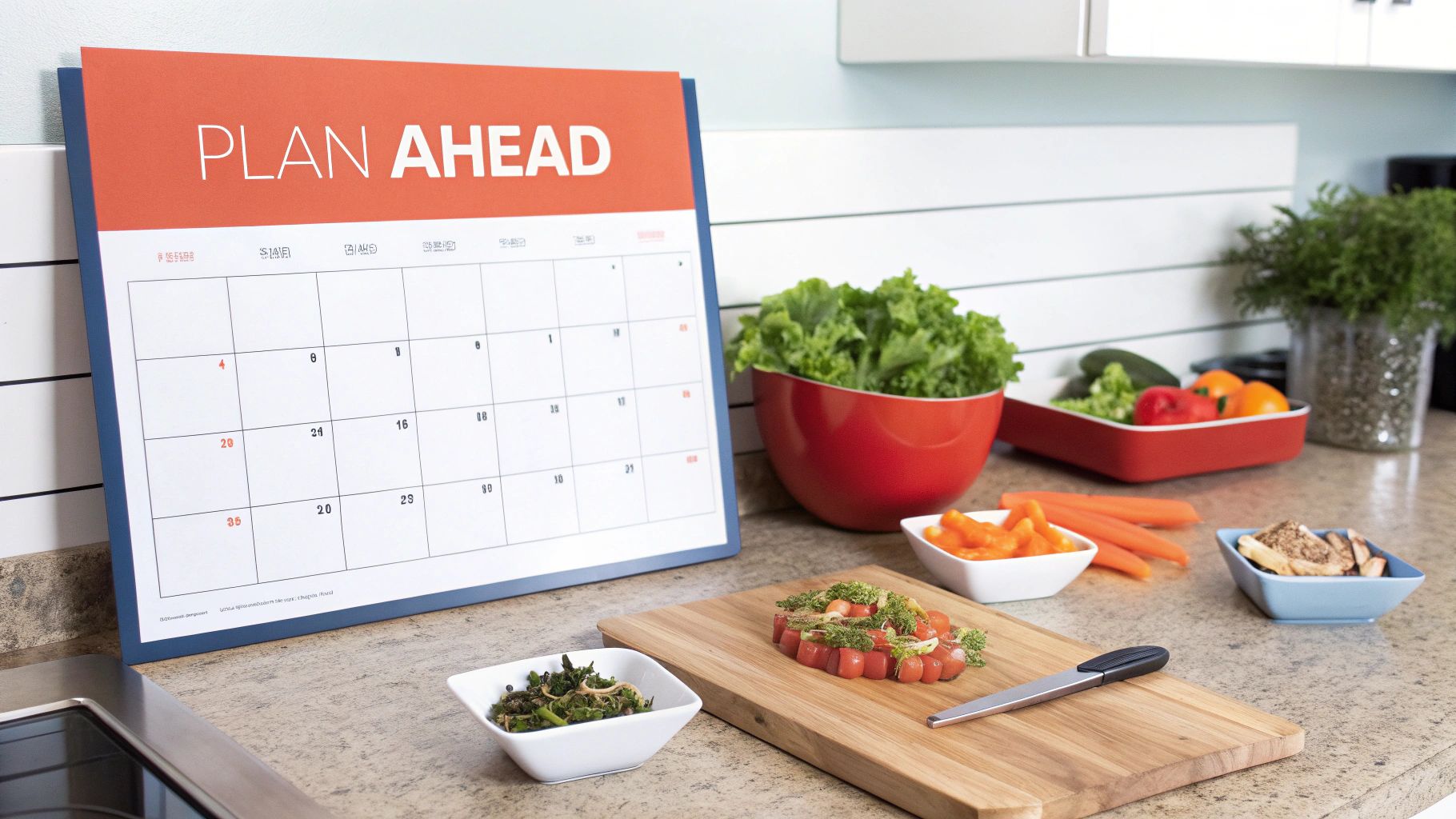
Deciding what to eat for every meal can be exhausting. Meal prepping offers a simple solution, especially for beginners. It changes not only what you eat, but your entire relationship with food. It’s a real lifestyle change, not just a way to save time.
Beyond the Clock: Unexpected Advantages
One of the biggest benefits is the time saved. The average American spends 37 minutes each day preparing and cleaning up after meals. Meal prepping lets you do this all at once, freeing up valuable time during the week. This extra time can be used for hobbies or just relaxing. You can find more detailed statistics on meal prep time here: http://www.ers.usda.gov/amber-waves/2016/november/americans-spend-an-average-of-37-minutes-a-day-preparing-and-serving-food-and-cleaning-up
Meal prepping also gives you more control over your food choices. Having meals ready encourages healthier eating. It reduces the temptation of takeout or unhealthy snacks, which benefits your overall well-being.
From Beginner to Meal Prep Master: A Gradual Approach
There’s no single way to meal prep. Some beginners start with ingredient prep. This might include chopping vegetables, cooking grains, or marinating proteins. This simplifies weeknight cooking without requiring full meal assembly.
Others prefer full-meal prepping, making entire meals for the week. This saves the most time and gives you the greatest control over portions and nutrition. Both methods help beginners establish a healthier and more organized eating routine.
Building a Foundation of Success
Meal prepping also has psychological benefits. Knowing you have nutritious meals ready eliminates decision fatigue and provides peace of mind during a busy week. This consistency creates a positive feedback loop, making healthy eating a sustainable habit. This structure naturally leads to the practicalities of getting started.
Building Your Meal Prep Arsenal: Tools That Matter
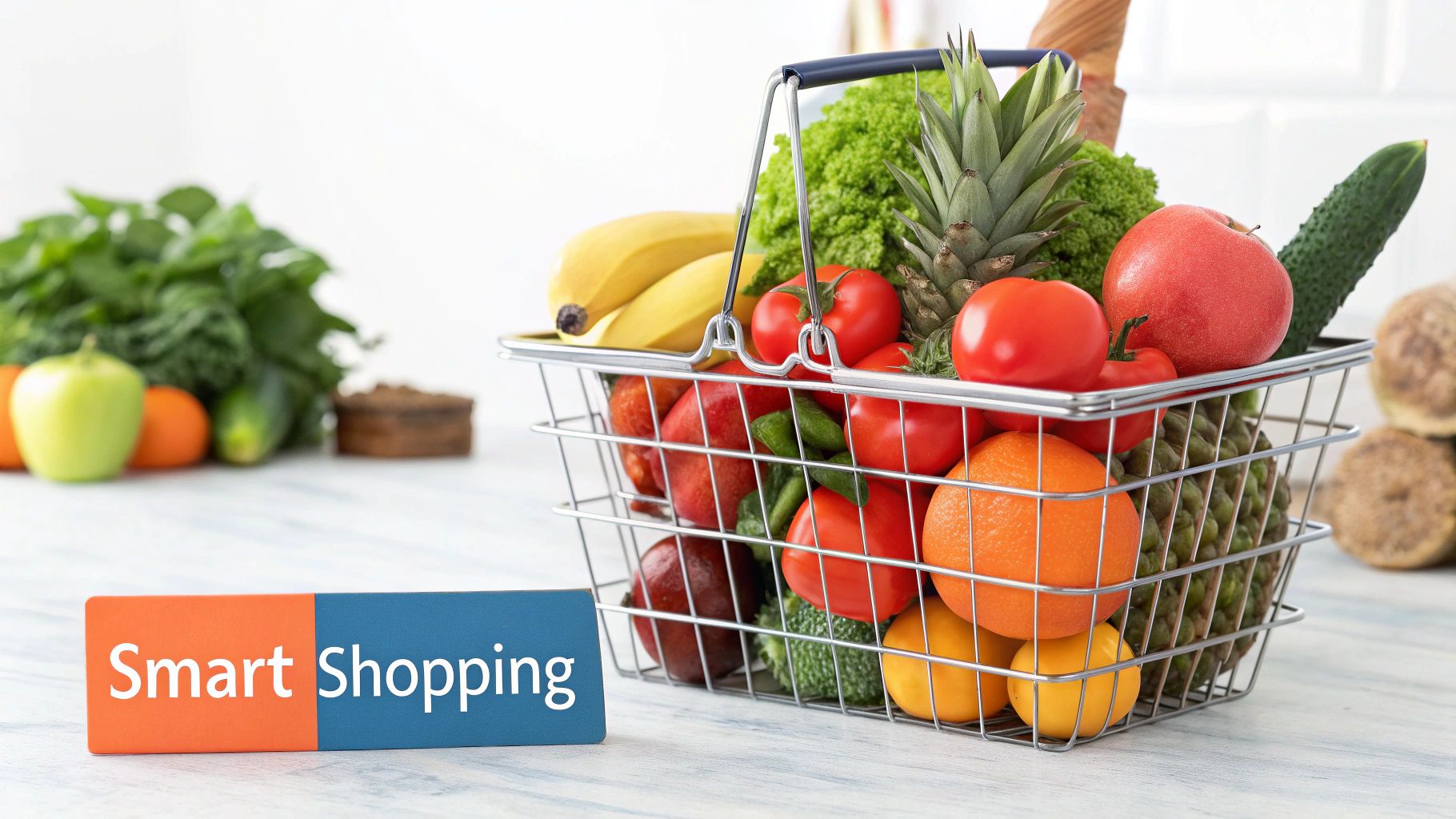
Forget the fancy gadgets you see online. Successful meal prepping for beginners starts with a few essential tools. Think of it as building a toolbox; you only need the right tools for the job, not every tool available. These key items will form the foundation for making meal prep a sustainable part of your life.
Essential Containers: Your Food's Best Friend
Storage containers are your most important investment. Look for durable, BPA-free options that are leakproof and stack easily. Glass containers are great for durability and oven safety.
If you're worried about weight or breakage, high-quality plastic containers with secure lids are a great alternative. Don't be fooled by marketing hype; prioritize functionality and a tight seal to keep your food fresh.
To help you decide, we've put together a comparison table highlighting the pros and cons of different container types:
Before we dive into the table, here's a quick explanation of its purpose: This table helps beginners understand the diverse world of meal prep containers and make an informed choice based on their needs and preferences.
| Container Type | Best For | Pros | Cons | Price Range |
|---|---|---|---|---|
| Glass | Oven-to-table meals, reheating | Durable, oven-safe, eco-friendly | Heavy, can break | $15-$40/set |
| Plastic (BPA-free) | Fridge and freezer storage, portability | Lightweight, shatterproof, affordable | Can stain, not always microwave-safe | $10-$30/set |
| Stainless Steel | Durability, on-the-go meals | Sturdy, eco-friendly, sleek look | Can be expensive, not microwave or oven-safe | $20-$50/set |
As you can see, each container type has its own advantages and disadvantages. Consider your cooking habits and lifestyle when making your selection. Choosing the right containers will make your meal prep journey smoother and more enjoyable.
Cutting Boards and Knives: Prep Like a Pro
Quality cutting boards and knives significantly impact your meal prep experience. A good cutting board provides a stable surface for chopping, while a sharp knife reduces prep time and minimizes accidents.
A chef's knife and a paring knife can handle most meal prep tasks. Start with these essentials and upgrade as needed. Victorinox is a well-known brand for quality knives.
Space-Saving Solutions: Making the Most of Your Kitchen
Smart storage is essential for beginners with limited kitchen space. Stackable containers, nesting bowls, and wall-mounted organizers maximize your space.
Multi-functional appliances, like an Instant Pot or a combination air fryer/oven, save valuable counter space. An organized workspace is essential for efficient meal prepping. For more tips on kitchen organization, check out this article: How to master your grocery lists.
Budget-Friendly Alternatives: Starting Smart
Meal prepping doesn't have to be expensive. Plenty of budget-friendly options exist for essential tools. Start with basic food storage containers and upgrade to higher-quality ones later.
A few good-quality knives are more effective than a large set of less durable ones. Build a functional arsenal that fits your budget and cooking style. This means investing strategically over time, adding tools as your meal prep practice grows.
Gradual Upgrades: Building Your Collection
Experienced meal preppers recommend a gradual upgrade path. Begin with the basics and add specialized tools as your needs and cooking style change. This lets you customize your tools to your specific meal prep routines.
For example, if you frequently make smoothies, a high-quality blender might be a worthwhile upgrade. This approach ensures that you invest in tools you will actually use, enhancing your meal prepping experience.
Meal Prepping on a Shoestring: Maximum Value, Minimum Cost
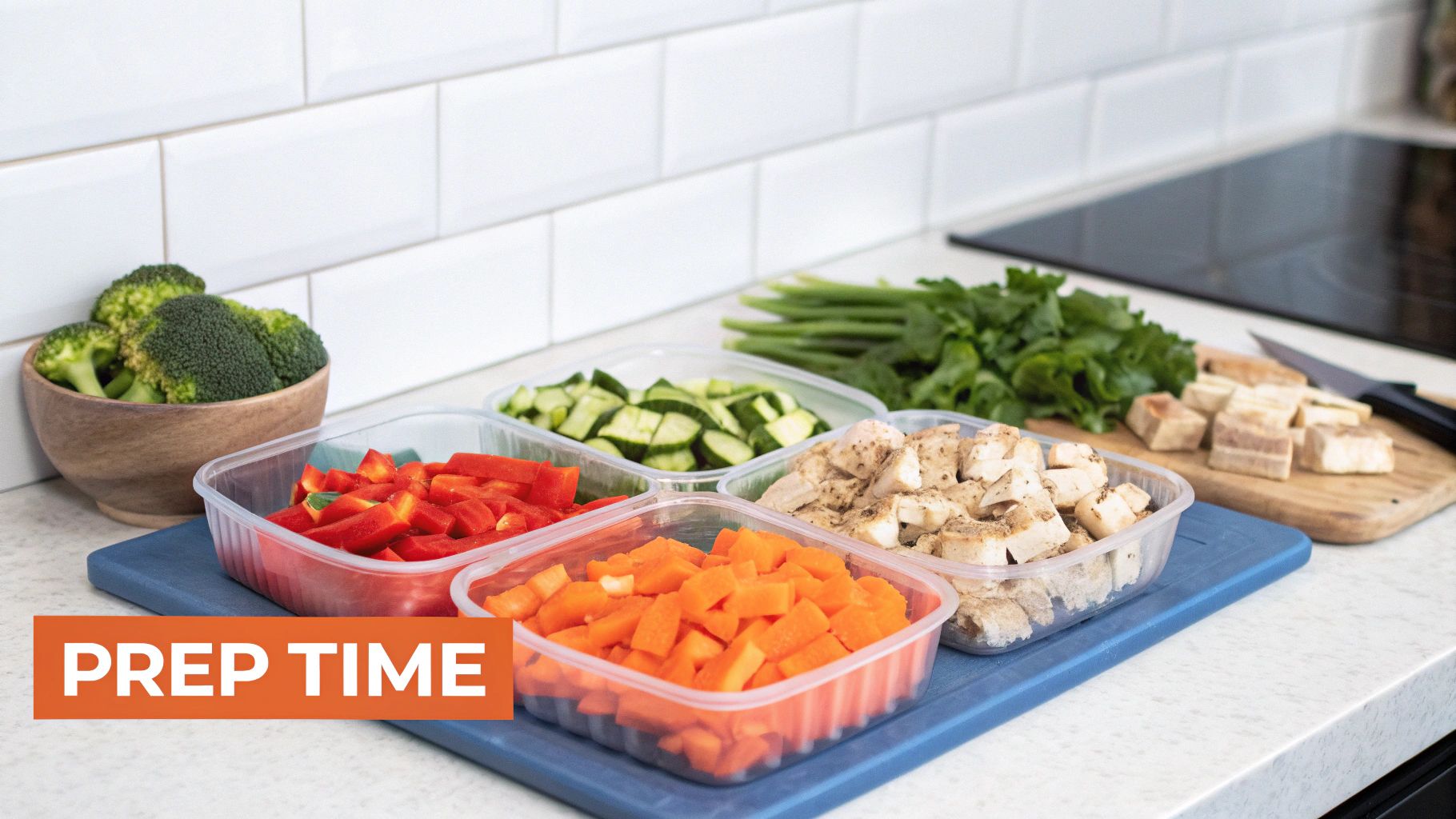
Healthy eating doesn't have to break the bank. Meal prepping, especially for beginners, can be a great way to manage your food budget. By using a few smart strategies, you can significantly lower your grocery bills and still enjoy nutritious, tasty meals.
Strategic Bulk Buying: Your Budget's Best Friend
One of the best ways to save money is through strategic bulk buying. This means buying larger quantities of ingredients you use often, especially when they're on sale. Don't mistake this for hoarding! Focus on staples like rice, beans, lentils, and frozen vegetables. These items last a long time and can be the foundation of many affordable meals, cutting down your weekly grocery spending.
Versatile Ingredients: The Building Blocks of Meal Prep
Another key to budget-friendly meal prepping is choosing versatile ingredients. Roast a whole chicken, for example, and use it in salads, soups, sandwiches, and stir-fries throughout the week. A big batch of quinoa can be used in breakfast bowls, lunch salads, or as a dinner side. This "ingredient crossover" reduces waste and stretches your food budget. One of the key benefits of meal prep is cost savings. By planning meals and buying ingredients in bulk, beginners can reduce their grocery bills. Purchasing staple foods like pasta, rice, and beans during sales can save significant money over time. Meal prepping also helps avoid food waste by ensuring ingredients are used before they expire, further contributing to cost efficiency.
Seasonality and Savings: Eating with the Seasons
Paying attention to seasonality can also have a big impact on your grocery bill. Fruits and vegetables are usually cheaper and tastier when they're in season. Build your meals around what's available at the farmer's market or on sale at the grocery store. This way, you'll connect with the natural rhythm of food production and save money.
Price-Per-Meal: A Game-Changing Calculation
Think differently about grocery shopping by calculating the price-per-meal. This helps you see hidden costs and find ways to save. Simply divide the total recipe cost by the number of servings. This allows you to make smart choices about which meals offer the most value, especially when comparing different recipes or homemade versus pre-made meals. This mindful approach helps you balance your health and financial goals.
Premium Ingredients: When to Splurge
Budget-conscious meal prepping often focuses on affordable staples, but sometimes premium ingredients are worth the splurge. High-quality spices, for example, can greatly improve the flavor of your meals, making them more satisfying and preventing meal fatigue. These small additions can make a big difference over time.
Budget Breakdowns: Real-World Examples
Here are some weekly budget examples for different households and diets:
- Single Person (Vegetarian): By focusing on beans, lentils, rice, and seasonal vegetables, a single person can easily meal prep for under $50 a week.
- Couple (Omnivore): Using strategic bulk buying and ingredient crossover, a couple can enjoy a variety of meals for around $75 per week.
- Family of Four (Omnivore): Planning meals around affordable proteins like chicken and ground beef, along with plenty of seasonal produce, a family of four can meal prep for about $100-$150 a week.
These are just examples; actual costs depend on your location and dietary choices. They show how meal prepping can work for different budgets and lifestyles, making it less daunting and more accessible.
By using these strategies, you can change your relationship with food and finances. Meal prepping becomes a powerful tool, allowing you to enjoy healthy, delicious meals while sticking to your budget. This prepares you for the practical steps of your first meal prep session.
Your First Prep Session: Breaking Down The Process
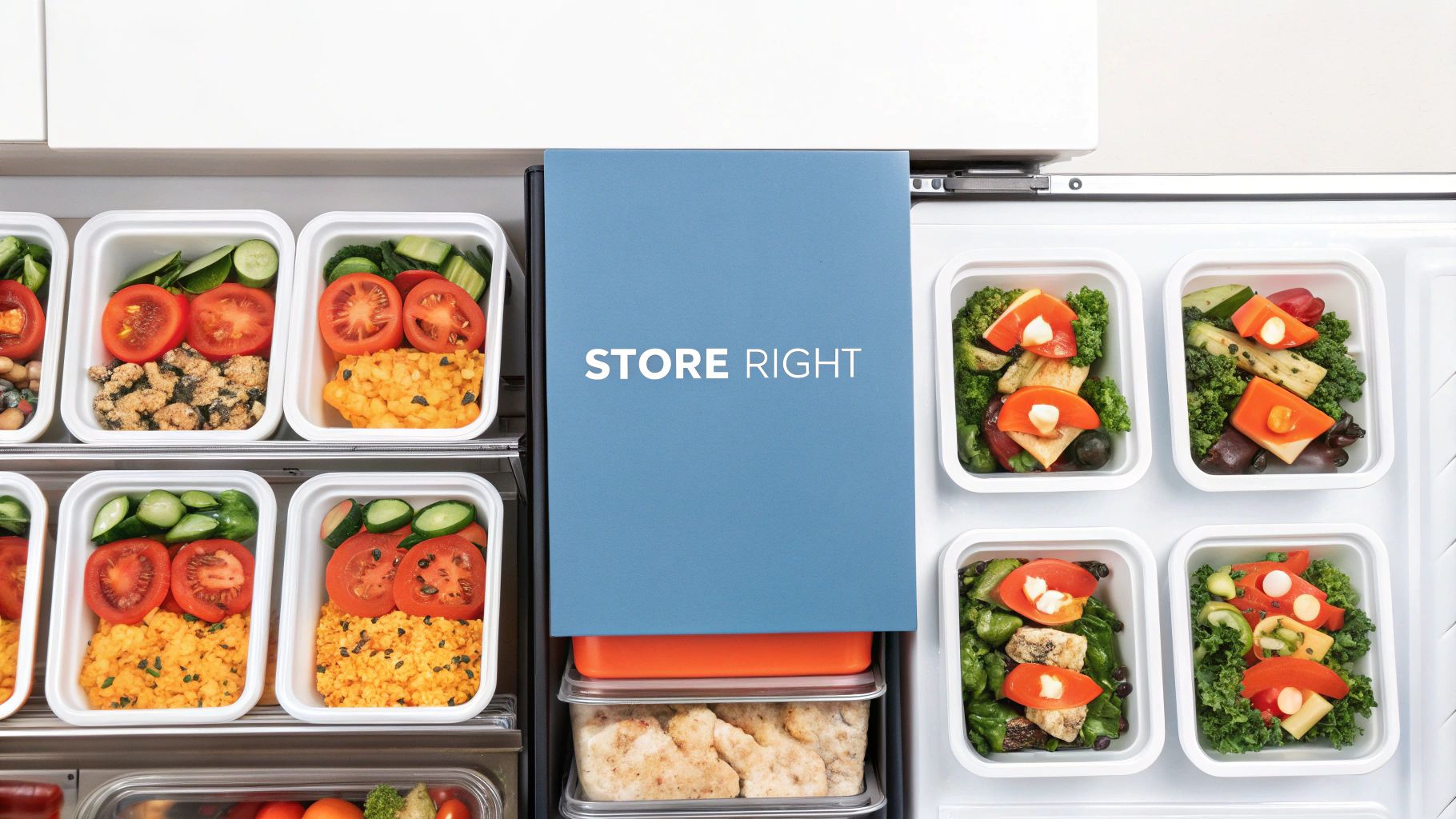
Stop overthinking meal prepping! This section provides a step-by-step guide for your first meal prep session. We'll use the combined experience of many beginners to create an effective, stress-free sequence designed for success.
Setting Up Your Kitchen: Creating A Flow
Before you start chopping, setting up your kitchen is essential. Just like a professional chef, organization is key to a smooth prep session. Clear your counters to make room for chopping and organizing. Designate separate areas for prepped ingredients and cooked items to streamline the process and prevent mix-ups.
Having clearly defined spaces helps you stay focused and efficient, minimizing the chance of cross-contamination. This also makes cleaning up afterward much easier.
The Optimal Prep Order: Maximizing Efficiency
The order in which you prep makes a significant difference. Start by washing and chopping all your produce. Having everything ready to go makes the cooking process much smoother.
Next, focus on cooking grains, roasting vegetables, or marinating proteins. Tackling these larger tasks early establishes a productive workflow. Completing these steps early provides a sense of accomplishment, motivating you to finish.
Time-Saving Shortcuts: Learning From The Pros
Seasoned meal preppers have learned valuable time-saving tricks. Batch cooking is one of these shortcuts. If multiple recipes call for chopped onions, for example, chop enough for all of them at once.
Another tip is to use your appliances strategically. While your oven roasts vegetables, use your stovetop to cook grains. This multitasking approach significantly reduces your overall prep time.
Starting Small: The Psychology Of Success
For your first session, aim for 2-3 meals for the week. This manageable goal helps you learn the ropes without feeling overwhelmed. As you become more comfortable, gradually increase the number of meals you prepare.
This approach keeps meal prepping manageable and sustainable. Remember, building a new habit is a marathon, not a sprint! Focus on consistency over quantity in the beginning.
Food Safety First: Preserving Quality And Freshness
Food safety is crucial. Always wash your hands thoroughly and use separate cutting boards for raw meats and produce. After cooking, let your meals cool completely before storing them in airtight containers.
This prevents condensation and bacterial growth, keeping your food fresh longer. Proper storage is key to safe and delicious meals.
Troubleshooting: When Things Don't Go As Planned
Even with careful planning, things can go wrong. If a recipe takes longer than expected or you run out of an ingredient, don't stress! Be flexible.
Substitute ingredients or simplify the recipe. The goal is to make your life easier, not add more stress. A little improvisation can go a long way.
Your Sunday Prep Blueprint: A Realistic Example
To illustrate these concepts, here’s a sample Sunday prep schedule designed for beginners:
To help you visualize your first prep session, we've put together a sample timeline. This table breaks down a 2-hour session, providing tips and outlining what you'll achieve in each phase.
Beginner's Meal Prep Timeline: A step-by-step breakdown of a 2-hour meal prep session with timing for each phase
| Time | Activity | Tips | What You'll Accomplish |
|---|---|---|---|
| 1:00 PM | Wash and Chop Produce | Use separate cutting boards | All produce prepped |
| 1:30 PM | Cook Grains (Rice, Quinoa) | Start grains on the stovetop while the oven preheats for roasting. | Grains ready for meals |
| 2:00 PM | Roast Vegetables & Bake/Grill Protein | Use a timer to avoid overcooking. | Main components of meals cooked |
| 3:00 PM | Assemble Meals into Containers | Allow food to cool before storing. | Meals ready for the week |
| 3:30 PM | Clean Up | Wash dishes as you go to save time later. | Kitchen clean and organized for the week |
This timeline is just a starting point. Adjust it to fit your recipes and schedule. As you gain experience, you’ll develop your own personalized routine. Remember, the key is to start small, learn as you go, and enjoy the process!
Beginner-Friendly Recipes That Actually Work
Meal prepping for beginners can feel daunting. Forget those perfectly styled Instagram photos. This is about recipes that taste great all week and are simple to make. We're prioritizing both flavor and practicality.
Choosing the Right Ingredients: Longevity and Flavor
Some ingredients are meal prep champions, holding up well and even tasting better over time. Roasted vegetables like sweet potatoes and Brussels sprouts become sweeter when reheated. Hearty greens like kale stay crisp in salads and grain bowls.
However, delicate leafy greens or creamy sauces are best added fresh. This prevents them from getting soggy and keeps your meals enjoyable for days.
Texture Considerations: Avoiding the Mush
Texture is key for meal prep success. Nobody wants a mushy meal by midweek! Consider how ingredients will hold up after storage and reheating. Root vegetables and grains generally maintain their structure. Softer vegetables might be better added fresh or cooked separately.
For example, if you're making a grain bowl with roasted vegetables and chicken, store them separately. Combine just before eating for the best texture and freshness. This simple step elevates the entire meal.
Flavor Enhancers: The Magic of Time
Some ingredients’ flavors actually improve over time. Think chili or stew: the flavors blend and deepen after a day or two in the fridge. This melding of spices and ingredients creates a richer taste.
Similarly, marinades continue to work their magic on proteins, boosting flavor and tenderness. You might be interested in: How to master your recipe management.
Storage and Reheating: Maximizing Freshness
Proper storage is crucial for preserving your meals. Airtight containers prevent spoilage and freezer burn. Glass containers are great for reheating in the oven or microwave. Plastic containers offer portability and convenience.
Consider the best reheating method for each ingredient. Roasted vegetables crisp up nicely in the oven, while soups and stews reheat easily on the stovetop. These details ensure your meals taste and feel their best.
Preventing Meal Fatigue: Creative Variations
Getting bored with the same meals is a common meal prep problem. Combat this with planned variations. Grilled chicken can be used in salads, tacos, or sandwiches.
Roasted vegetables work well in grain bowls, omelets, or pasta dishes. This adds variety while minimizing prep time and food waste.
Prep-Day Shortcuts: Streamlining Your Workflow
Batch cooking staples like grains and roasted vegetables saves time and effort. Chopping extra vegetables while you’re already prepping makes them readily available for other meals. This advance work makes weeknight cooking much easier.
By focusing on these practical tips, you can create a meal prep routine that really works for you. Successful meal prepping is about finding a sustainable system for your lifestyle and dietary needs. This helps you navigate any challenges that come up.
Overcoming the Meal Prep Roadblocks
Meal prepping, like any new skill, has its challenges. From unexpected schedule changes to the dreaded "flavor fatigue," these roadblocks can derail your meal prep journey. But by understanding these common obstacles and using the right strategies, you can create a sustainable meal prep routine that works for your life.
Battling Flavor Fatigue: Keeping Your Taste Buds Excited
One of the biggest challenges is flavor fatigue. Eating the same meals repeatedly can quickly get boring and tempt you back to unhealthy options. The key is adding variety without making your prep too complicated.
-
Spice it up: Use a variety of herbs, spices, and sauces to create different flavor profiles. For instance, roasted chicken can be seasoned with Italian herbs one day and smoky paprika the next.
-
Creative Variations: Think of your prepped ingredients as building blocks. Roasted vegetables can be used in salads, grain bowls, or as a side dish. Grilled chicken can be used in tacos, sandwiches, or stir-fries.
-
Texture Play: Varying the texture of your meals also helps prevent boredom. Combine crunchy roasted vegetables with creamy dips, or soft-cooked grains with crispy proteins.
These simple strategies keep your meals interesting and prevent you from falling into a food rut. Check out this resource for more tips: How to categorize recipes to organize your meal prep ideas.
Schedule Disruptions: Adapting Your Prep to Life's Curveballs
Life rarely goes as planned. Late meetings, family emergencies, or unexpected social events can disrupt your meal prep schedule. Flexibility is key to staying on track.
-
Mini-Preps: Instead of spending an entire Sunday prepping, try shorter, more frequent prep sessions. A 30-minute session mid-week can restock your ready-to-eat meals.
-
Freezer-Friendly Meals: Keeping freezer meals on hand provides a backup for busy weeks. Soups, stews, and casseroles freeze well and reheat easily.
-
Embrace Leftovers: Don't be afraid to repurpose leftovers into new meals. Leftover roasted chicken can become chicken salad or be added to a frittata. This reduces food waste and simplifies weeknight cooking.
Adapting your prep to your schedule makes meal prepping a helpful tool, not a stressor.
Maintaining Motivation: Staying Engaged With the Process
The initial excitement of meal prepping can fade. Maintaining motivation requires finding strategies that keep you engaged.
-
Find a Prep Buddy: Prepping with a friend or family member can make the process more fun and keep you accountable. Sharing tips and recipes can also give you new ideas.
-
Celebrate Small Wins: Acknowledge your accomplishments. Each successful meal prep session is a step toward healthier habits. Recognize your progress and reward yourself.
-
Don't Strive for Perfection: Meal prepping isn't about creating picture-perfect meals. It's about making healthy eating easier. Focus on progress, not perfection.
Building a sustainable habit takes time. These strategies can help you overcome mental hurdles and maintain momentum.
Balancing Perfectionism With Practicality: Finding Your Meal Prep Sweet Spot
Many beginners struggle with balancing perfectly planned meals with limited time and resources. Finding the balance between perfectionism and practicality is key for long-term success.
-
Start Simple: Begin with basic recipes and gradually increase complexity as you gain confidence.
-
Prioritize Efficiency: Focus on prepping ingredients you’ll use in multiple meals to maximize your time and minimize food waste.
-
Embrace Imperfection: It's okay if your meals aren't perfectly portioned or visually appealing. The goal is to nourish your body.
By focusing on practical strategies and letting go of unrealistic expectations, you can create a meal prep routine that fits your lifestyle and supports your health goals.
Ready to streamline your recipe organization? Try Recify today and experience the benefits of a user-friendly recipe management system: Get Started with Recify
